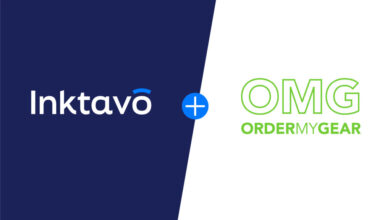There are three conditions which trigger dye migration and lead to white ink with a tinted version of the synthetic garment color.
These are sublimation, solvation, and cross migration. Sublimation occurs when excess time or temperature cause the dye to turn to gas, at which point the gas may migrate to the surface of the print. Interface migration occurs when the liquids in the ink put the dye stuff into solution and, again, migration to the surface becomes a possibility. The third and most nefarious type of migration occurs when the dye-laden fibers on the surface cause migration at the surface. Avoid additives in the white ink, which may trigger bleeding. Also, be wary of using the same additive in an overprint color on top of a white underbase. In this case, the plasticizer in the reducer may migrate into the underbase and cause bleeding on the overprint color while the white does not show migration.
—Synergy Inks



